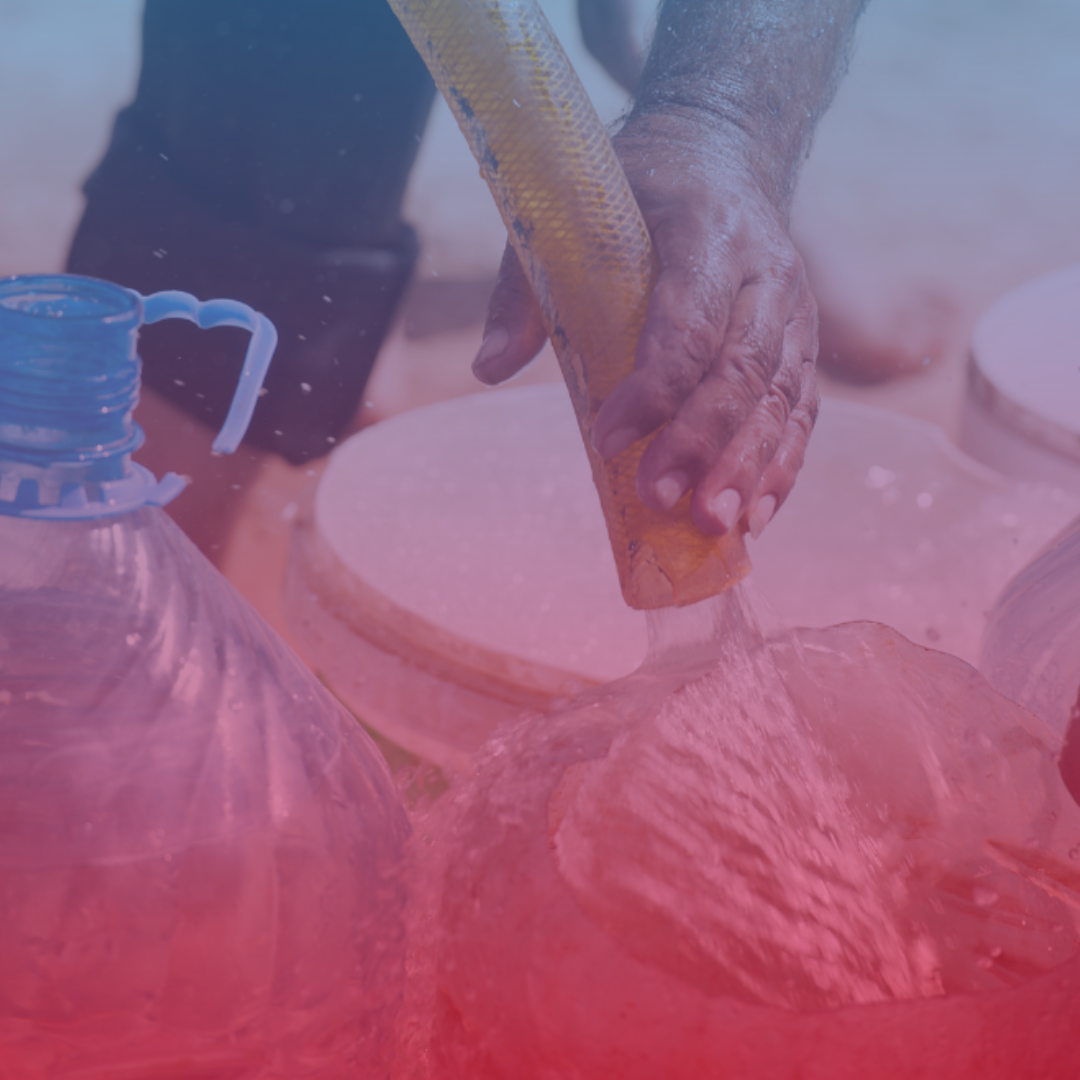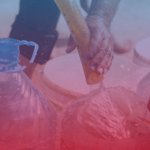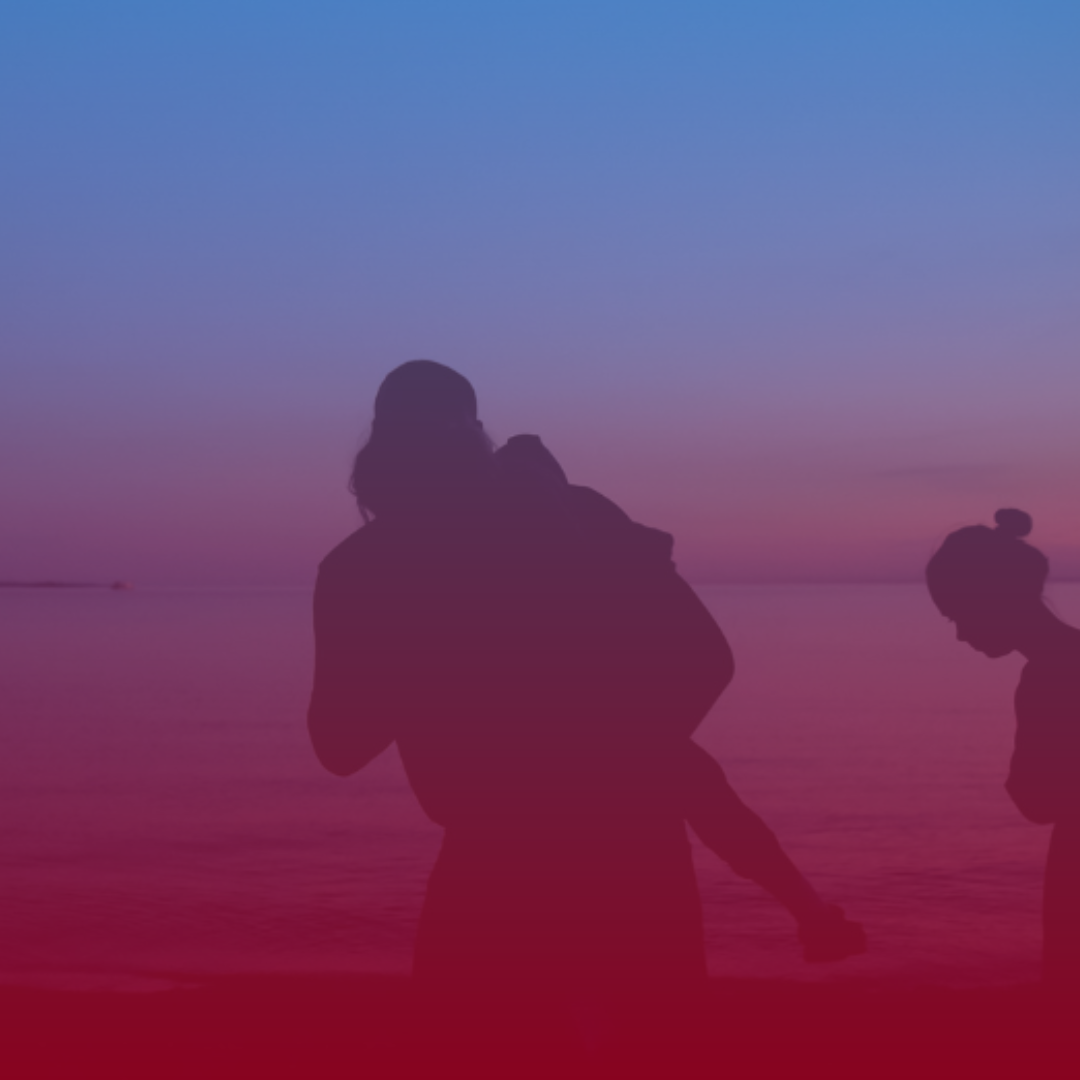
Written by: Marina Muñoz Bernad
Editor by: Daniele Sorato
“Stressed water supplies exacerbate food insecurity, biodiversity loss and challenges human development. On our current trajectory, 700 million people will be at risk of being displaced by drought by 2030. And by 2050, the population living in water-stressed transboundary basins could double. Droughts can affect health, wealth, and educational attainment over generations, with pronounced effects on women and girls” (Jha, 2023)
ABSTRACT
This paper seeks to explore the significant role of water in conflicts, examining its various dimensions as a cause, trigger, or catalyst. It aims to critically analyse the concept of “water wars” and the potential future scenarios they entail, while also considering the efficacy of “water diplomacy” as a means to mitigate such conflicts. Through an in-depth examination of the Palestine case study, it aims to analyse the complex interplay between water scarcity and conflict dynamics. Additionally, it wants to shed light on how water shortages can exacerbate tensions and contribute to violence, but also entail some potential for cooperation.
Keywords: water-related conflicts, water rights, trigger of conflict, structural causes, water diplomacy
INTRODUCTION
Access to water is essential to human development and welfare, serving as a cornerstone for health, dignity, and prosperity. Yet, billions of individuals continue to be deprived of this fundamental right, lacking access to safely managed water and sanitation services. According to UNICEF (2023), since 2015 over 687 million people have gained access to safely managed services. However, 2.2 billion people still lacked access to safely managed water services in 2022, including 1.5 billion with basic services, 292 million with limited water, 297 million who used unimproved sources, and 15 million who still collected drinking water directly from the rivers, lakes, and other surface water sources. In addition, the World Health Organization (WHO) has already emphasised the direct correlation between contaminated water or poor sanitation and the subsequent transmission of diseases such as cholera, diarrhoea, hepatitis A, and polio. Around 1 million people are estimated to die each year from diarrhoea as a result of unsafe drinking water, sanitation, and hand hygiene. If these risks were to be addressed, this could prevent around 400.000 deaths a year among children under 5 years of age (WHO, 2023). This data illustrates the magnitude and the urgent need to address this permanent issue that is increasingly receiving attention from the international community due to the expected climate change-related disasters and the scarcity of natural resources.
This article seeks to initially identify the primary factors that heighten the likelihood of a violent water dispute, followed by an examination of the Palestinian-Israeli conflict, with an added focus on gender perspectives. The research will consider aspects such as quantity, quality, and equitable distribution among involved parties.
LITERATURE REVIEW
Violence associated with water resources has occurred throughout history, whether with water triggering violence and armed conflict, being used as a weapon, or/and exacerbating pre-existing vulnerabilities and violation of human rights. Understanding the causes of water-related violence becomes imperative in conflict resolution and peace process strategies to reduce the risks of future clashes and understand its underlying structural causes. Social, economic, and political challenges associated with water resources pose various risks to communities worldwide, from water-related diseases, crop failures, ecological destruction, or direct violence. The frequency of water-related conflicts has grown over the past two decades, especially in the Middle East, highlighting the need for additional research on the role of key drivers of water-related violence (Gleick & Shimabuku, 2023). In the literature, water has been considered (1) a trigger or root cause of conflict, (2) a weapon, or (3) a causality. We will address these three spheres and their possibilities. The potential of competition over water resources to spark and become a potential driver of conflict has led some researchers to focus on the relationship between water resources and war, and examine the challenges and opportunities posed (Petersen-Perlman, Veilleux & Wolf, 2017).
WATER AS A DRIVER OF CONFLICT
Initially, we will discuss the role of water as both a catalyst and an instigator of conflicts. In recent decades, an increasing number of people exposed to food insecurity has emerged, largely attributable to reduced access to water resources. This trend serves as a stark testament to the water stress experienced by agricultural communities, subsequently precipitating a concerning escalation in both food insecurity and poverty levels. This might contribute to the tensions surrounding violent conflicts and other push and pull factors; in particular, civil unrest and protests can erupt in a context where the government cannot ensure sufficient access to water resources or offer essential safeguards against the profound impacts of climate-induced disasters. This systemic failure exacerbates the already precarious conditions and perpetuates a cycle of instability and social unrest (Muller et al., 2021). Some authors have studied the interrelation between food insecurity, water insecurity, and social conflict (Koren, Bagozzi & Benson, 2021). Identifying a singular cause for migration is highly challenging, as it rather requires acknowledging the multifaceted and multidirectional nature of this complex phenomenon. However, water stress and insecurity may indeed contribute to other factors prompting migration, which has been argued to be a “threat multiplier” (Koren, Bagozzi & Benson, 2021). The term “threat multiplier” refers to the aggravation of existing social tensions by placing additional strain on parties already grappling with ongoing conflicts.
THE WEAPONISATION OF WATER
The second sphere considered is the well-known “weaponisation of water”, which refers to incidents in which water systems are deliberately targeted to achieve strategic goals. In this sense, it might include the poisoning of water, deliberate non-access or restricted availability of water resources, or the destruction of water infrastructures and sanitation. Water scarcity played a crucial role in the conditions that led to the political unrest and violent insurrection in Syria during the spring of 2011 and the consequent spillover into Iraq (King, 2016). The destruction of water infrastructures can threaten societal stability and become a possible cause of the intensification of conflicts. Similarly, blocking water facilities and poisoning wells can have terrible consequences for society. According to De Bruin et al. (2018), there are three possible ways in which water can be used as a weapon: (1) restricting its availability, (2) flooding areas, and (3) poisoning water resources.
WATER AS A CAUSALITY
Finally, the third dimension contemplates water as a causality, i.e. the consequence of armed conflicts. When disputes escalate, vital infrastructure for water supply and sanitation becomes vulnerable to damage or destruction. Scarce resources are fiercely contested, intensifying competition and exacerbating tensions among communities. The ramifications of water scarcity perpetuate cycles of instability, deepening the roots of conflict and prolonging the suffering of the most vulnerable and affected populations. For more than 30 years, the Pacific Institute has tracked conflicts associated with water using the Water Conflict Chronology. According to this, water-related conflicts are concerningly increasing in the world. During the Ukraine war, Russian attacks on energy and water systems and infrastructures have been used as a tool. The destruction of the Kakhovka dam and reservoir and the constant attacks on pipelines and water treatment plants are causing the drastic reduction of water supplies to millions of civilians. Similarly, the shared waters of the Helmand River have triggered tensions between Iran and Afghanistan (Gleick, 2023). Water stress has been demonstrated to be an important driver of domestic socio-political stability, with conflict becoming more prevalent and more intense in areas with limited freshwater availability and greater inequality in access to it. However, it would be a mistake to consider water as the sole driver of an international conflict. In most cases, it can be considered as a trigger and a driver of other challenges such as migration or aggravated interethnic disputes, as experienced in Pakistan (Abbott, Bazilian, Egel & Willis, 2017). The continuous political chaos and instability in the Middle East have involved the use of water both as a target and a weapon, and case studies related to this have been addressed, for instance in the cases of Syria, Iraq, and Yemen (Gleick, 2019).
WATER DIPLOMACY
The international community’s increasing concern regarding proper management and legal frameworks governing international water resources has been reflected in the work of intergovernmental and non-governmental organisations. The current legal and institutional framework is limited: on 28th July 2010, through Resolution 64/292, the United Nations General Assembly explicitly recognised the human right to water and sanitation, and it acknowledged that clean drinking water and sanitation were essential to the realisation of all human rights. This resolution called upon States and international organisations to provide financial resources, help through technological transfer and provide safe, clean, accessible, and affordable drinking water and sanitation. The different conditions included (1) sufficient water for uses such as drinking, personal sanitation, washing clothes, food preparation, and personal and household hygiene, (a sufficient quantity is between 20 and 100 litres per person per day, according to the WHO), (2) safe (i.e. free from microorganisms, chemical substances, and radiological hazard), (3) acceptable in colour, odour, and taste, (4) physically accessible, and (5) affordable to all, with the UNDP suggesting that its cost should not exceed 3 percent of household income. In Article 24, the Convention on the Rights of the Child (CRC) recognises the compromise of the states to combat disease and malnutrition “through the provision of adequate nutritious foods and clean drinking water, taking into consideration the dangers and risks of environmental pollution” (United Nations Convention on the Rights of the Child, 1989).
While recently the idea of “water wars” has been used by some scholars, according to these authors the concept has been inconsistently defined, as most of the political tensions and conflicts have involved water as a tool, target, or victim in violent scenarios. Even though water-related conflicts still exist, as well as the perceived risk of future armed battles over water, possible cooperation is still on the table. Academics from the field of hydro-diplomacy seem to converge in the idea that a scenario of “war for water” does not seem possible for two main reasons: (1) the majority of the hydric conflicts between nations have been resolved in cooperation (Wolf, 2007) and (2) the technological development will increase the availability of water through better efficiency in high-demand water sectors such as agriculture and mining (Pedrozo Acuña, 2022). The need for transboundary water cooperation as a “tool for peace, security and stability”, as in the Sustainable Development Goal (SDG) 6 (“Ensure availability and sustainable management of water and sanitation for all”) has been emphasised by the Council of the European Union as one of the most needed conditions for better cooperation among member states (Council of the EU, 2021). In this sense, water diplomacy is conceived to help countries settle disputes, contain tensions, and avoid an escalation into conflict. In other words, although water has often been perceived as a cause of conflict, others suggest the opposite perspective: water can be an efficient tool for facilitating negotiations and reaching joint agreements to prevent escalations.
“The integrated management of the water–energy–food nexus—and co-operation among decision-makers in all three domains—is key to tackling urgent issues related to water resource management, ecosystem protection, and water supply and sanitation. A cross-sectoral approach enables a better understanding of the complex interrelationships between our limited resources, forcing us to consider the ripple effects that a decision in one sector has on other sectors” (Economist Impact, 2023)
The term “water security” is a concept that captures the threats to sustainable and safe water. Associating human security with water is especially important in conflicts or water scarcity disasters. Water and water-related challenges do not necessarily and inevitably lead to disagreements, conflicts, and insecurity, but might be linked to those when interacting with more complex variables. On the contrary, considering water challenges as an opportunity to create synergies and positive cycles of cooperation and peacebuilding should remain on the agenda. For instance, the Water, Peace and Security Partnership (WPS) aims to develop innovative tools to understand the origins of water-related security risks and their implications for conflict and insecurity. To achieve this, it seeks to understand the deep and complex relations between water-related risks and conflicts (Schmeier, 2019). At the same time, the implication of different stakeholders at the negotiating table should become a priority.
THE ISRAELI-PALESTINIAN CONFLICT CASE STUDY
Water in the Middle East is highly politicised and has consequently contributed to past conflicts. Moreover, it continues to amplify the present Palestinian-Israeli dispute, revealing the absence of any real willingness to cooperate, since the reality proves that Israel’s control over the resources is absolute (Obidallah, 2008). The Water for Life International Decade for Action 2005-2015 helped around 1.3 billion people in developing countries access safe drinking water and drove progress on sanitation as part of the effort to meet the Millennium Development Goals. Previously, the United Nations Water Conference (1977), the International Drinking Water Supply and Sanitation Decade (1981-1990), the International Conference on Water and the Environment (1992), and the Earth Summit (1992) — all focused on this vital resource. Israel-Palestine hostilities have kept on since 1967, however, after the peace talks in 1990, an initial framework for cooperative water management seemed to be followed. In November 1967, Israeli authorities issued Military Order 158, stipulating that Palestinians were prohibited from building new water installations without prior approval from the Israeli army. Subsequently, any extraction of water from newly identified sources or the establishment of additional water infrastructure necessitated permits from Israel (Amnesty International, 2017). The West Bank is located on the western side of the Jordan River and it was divided into three areas (A, B, and C) following the Oslo II Accords. The Provisional Oslo Accords in 1995 established a distribution of water among Israelis and Palestinians at 80% and 20% respectively as a temporary solution. However, the situation nowadays has deteriorated notably, with Palestinians having no more than 14% of the resources. The majority of the Palestinian population is concentrated in areas A and B, which fall under the civil administration of the Palestinian Authority. On the other hand, area C is where Israeli settlements are, hence other infrastructures have been constructed. The Jordan River is not only the major source of water for the inhabitants of the West Bank but also for countries around the river, mainly Syria, Egypt, Lebanon, Jordan, and Israel. Since Israel occupied the West Bank in 1967, it has imposed strict control measures on the usage of the Mountain Aquifer by the Palestinians, which is the major source of water in the West Bank and covers an area of 6.000 square miles. This Aquifer is the only remaining water resource for Palestine and one of the most important groundwater resources for Israel. Water issues have played an important role in Israel’s national security agenda since the government views cooperation on water issues with Palestine as a zero-sum game (Dai, 2021). If water management entails “the process of administration, development, and distribution of water resources to ensure that it gives value and benefit to human life” (Amaso & Allen, 2020: 67), the equitable distribution of water is key for its survival. After the Six-Day War of 1967 and the subsequent occupation of the West Bank, Israelis have taken full control and administration of the Jordan River and Palestinians do not have any freedom to make use of its water. According to Amaso & Allen (2020), the weaponisation of water management has increased with water resources becoming increasingly scarce. In fact, the former United Nations Secretary-General Boutrous-Ghali in 1985 predicted that war in the Middle East would not be about politics but rather about water (Al-Jazeera, 2003). In our case, Israel has confiscated all the water resources channels in the West Bank through the deployment of military orders and coercive measures such as the destruction of Palestinian residential and water infrastructures, arguing that they were built without permission.
“Water was the unseen motivator for the launch of the Israeli military offensive in 1967. The strategic location of the Jordan River in Palestinian territory was an environmental disadvantage as well as an existential threat to Israel. The Jordan River had to be in Israeli hands to make it possible for the waters to be diverted to areas with an Israeli population. (…) The general argument of the Palestinian/Israeli conflict has been about territorial integrity and self-determination. However, these very important issues cannot withstand the existential importance that water brings to the negotiation table” (Amaso & Allen, 2020: 72-73).
Forced displacement and an increase in exposure to violence have been consequences of the war in Gaza, where the well-being, safety, and health of Palestinians are quickly deteriorating. The lack of access to basic resources such as clean water is causing physical health challenges among Palestinian children. In 2014, only 11% of children living in the Gaza Strip had access to improved water sources due to Israeli authorities limiting Palestinian access to water resources such as the Jordan River and West Bank aquifer by imposing restrictive measures and limiting permits for building water installation (Andros, 2023). The weaponisation of water and its infrastructure has become increasingly present in recent armed conflicts: since 7th October 2023, Israel imposed a total blockade and cut the water supplies into the Gaza Strip. Israel’s Defence minister, Israel Katz, ordered a “complete siege” on the Gaza Strip, which included not only water supplies but also food and fuel. A shortage of water and lack of access to sanitation may cause or aggravate other devastating crises such as malnutrition and the spread of diseases, especially affecting vulnerable groups (Mohsen et al. 2023). Due to seawater intrusion, over-extraction, and chemical infiltration, the aquifers are being contaminated. In consequence, they rely on desalination units and unregulated private water tanks, while the remaining 10% comes from the three Israeli pipelines and small-scale seawater desalination plants (Hall, Kirschenbaum & Michel, 2024). Inadequate water quality is posing several scenarios of an expected health crisis since infections and diseases are much more prone to spread. According to the United Nations, a minimum of 50 litres of water per day per person is needed, but most families trapped in Gaza are living with only a fraction of that. Water for the Gaza Strip used to come mostly from the coastal aquifer but this has been contaminated and around 97% of the water from this source does not meet the WHO standards for human consumption. For this reason, Gaza has become almost entirely reliant on the 150 desalination plants, but the only desalination plant still operating in Rafah cannot supply the 1.5 million people fleeing war. Some of the other water infrastructures have been destroyed, while others cannot operate due to the shortage of fuel needed to run the generators that purify water through the process of reverse osmosis (Neuman, 2023).
“Since the start of the war, the average consumption of water for all purposes in Gaza has fallen to between two and three litres a day per person. And most of this water isn’t clean or safe to drink. To put this into perspective, flushing an efficient toilet once uses around six litres of water, washing hands properly takes nearly four litres of water each time, a five-minute shower uses nearly 40 litres of water and cooking typically takes at least two litres of water a day. Three litres is the bare minimum amount of water a person needs to drink in order to avoid health problems related to dehydration, including organ damage and failure!” (Anera, 2023)
This conflict emphasises the need to safeguard the principle of international humanitarian law prohibiting attacks or destruction of objects which are “indispensable to the survival of the civil population”. Due to the denial of access to water, Palestinian women have started taking menstruation-delaying pills in a desperate effort to face the unsanitary circumstances. These pills have side effects which might include irregular vaginal bleeding, nausea, changes to the menstrual cycle, and dizziness, according to health professionals (Alsaafin & Amer, 2023). Many women have been forced to shave their heads since they do not have water to wash their hair and this might entail conditions like alopecia, scalp ringworm, and bacterial infections (Sabah, 2024). The lack of access to adequate sanitation and clean water exacerbates gender inequalities and disparities, affecting menstrual health and – since they are more likely to be responsible for collecting water for their family – making it more difficult for them to go to school. Women and children are also responsible for cooking and home-making. For this reason, the limited access of women to water has at least two results. Firstly, the work at home is depreciated, as well as the activities related to this sphere. Secondly, the collection of water might result in an extremely time-consuming activity and, consequently, reduce the time for other activities (Crow, 2001).
CONCLUSIONS
We have already stated that access to water and sanitation is a human right; however, the weaponisation of water is increasing its presence during conflicts. The recent case of Israel’s war on Gaza confirms the existence of this new tendency: Palestinian people who already faced a shortage in water supply are now deprived of the most basic needs, including grave water distress. Water-related diseases stemming from a lack of hygiene highlight the connection between water and human security. States should adopt the necessary measures to ensure the fulfilment of the right to water by taking concrete and proactive steps that enable individuals and communities to enjoy these rights. When analysing the impact of water stress, we should embrace a gendered perspective, since women are a vulnerable target in conflict. The water crisis in Palestine is a dramatic reality. The political landscape of the ongoing war in Gaza adds complexity, while at the same time efforts to address water disparities and promote long-lasting solutions are more needed than ever. Palestinians are being deprived of water resources and sanitation, which constitutes a continuous violation of human rights. The interrelation between water, war, and peace is more evident than ever, and to forge a new path to peace, a negotiated response to water scarcity will be key for the political and economic survival of the region. Water justice is an imperative, and the international community should embrace equitable solutions.
REFERENCES:
Abbott, M., Bazilian, M., Egel, D., & Willis, H. H. (2017). Examining the food–energy–water and conflict nexus. Current Opinion in Chemical Engineering, 18, 55–60. doi:10.1016/j.coche.2017.10.002
Al-Jazeera (2003). “Middle East faces water crisis”. https://www.aljazeera.com/news/2003/9/21/middle-east-faces-water-crisis
Alsaafin, L. & Amer, R. (2023). No privacy, no water: Gaza women use period delaying pills amid Israel war”. Al Jazeera. Available at: https://www.aljazeera.com/news/2023/10/31/no-privacy-no-water-gaza-women-use-period-delaying-pills-amid-war
Amaso, B. & Allen, F. (2020). “Water Management in West Bank: Implications on the Israeli-Palestinian conflict”. In C.R. Chereji; A. Pop; & C. Sandu (Eds) Conflict and climate change (1st ed., pp. 63-76). Accent. Available at: https://www.researchgate.net/profile/Gospel-Lebari/publication/358574284_Climate_Change_Terrorism_and_Food_Insecurity_in_Nigeria/links/62299cb63c53d31ba4b5d3d8/Climate-Change-Terrorism-and-Food-Insecurity-in-Nigeria.pdf#page=63
Anera (2023). “Gaza’s water crisis puts thousands at risk of preventable death”. Available at: https://www.anera.org/blog/gazas-water-crisis-puts-thousands-at-risk-of-preventable-death/
Andros, G. (2023). Exposure to Violence and Instability among Children in Palestine. Ballard Brief, 2023(1), 3. Available at: https://ballardbrief.byu.edu/issue-briefs/exposure-to-violence-and-instability-among-children-in-palestine
Baba, A., & Neuman, S. (2023). “There’s a water crisis in Gaza that the end of fighting might not solve”. NPR.
Available at: https://www.npr.org/2023/12/29/1221571110/gaza-water-israel-crisis-hamas
Council of the EU (2021). “Water in diplomacy: Council confirms EU`s commitment to enhanced EU engagement”. Available at: https://www.consilium.europa.eu/en/press/press-releases/2021/11/19/water-in-diplomacy-council-confirms-eu-s-commitment-to-enhanced-eu-engagement/
Crow, B. (2001). Water: Gender and Material Inequalities in the Global South. UC Santa Cruz: Center for Global, International and Regional Studies. Available at: https://escholarship.org/uc/item/0rq308jc
Dai L. (2021). Implementation Constraints on Israel–Palestine Water Cooperation: An Analysis Using the Water Governance Assessment Framework. Water: 13(5):620. https://doi.org/10.3390/w13050620
De Bruin, S., Knoop, J., Visser, H., & Ligtvoet, W. (2018). Linking water security threats to conflict. Netherlands Environmental Assessment Agency. The Hague. Available at: https://www.pbl.nl/en/publications/linking-water-security-threats-to-conflict
Economist Impact (2023). UN Water Conference 2023: embracing the water‑energy‑food nexus: Sustainable development requires holistic mindsets. Available at: https://impact.economist.com/sustainability/resilience-and-adaptation/un-water-conference-2023-embracing-the-water-energy-food-nexus?utm_medium=cpc.adword.pd&utm_source=google&ppccampaignID=18151738051&ppcadID=&utm_campaign=a.22brand_pmax&utm_content=conversion.direct-response.anonymous&gad_source=1&gclid=CjwKCAjwrIixBhBbEiwACEqDJV4NYWGj3IQbYb6M6ns5DiEdGVCEbu4W9-4-oTFq5vC7JUIJ5YF4iBoC0SYQAvD_BwE&gclsrc=aw.ds
Gleick, P. H. (2019). Water as a weapon and casualty of armed conflict: A review of recent water‐related violence in Iraq, Syria, and Yemen. Wiley Interdisciplinary Reviews: Water. doi:10.1002/wat2.1351
Gleick, P. H., & Shimabuku, M. (2023). Water-related conflicts: definitions, data, and trends from the water conflict chronology. Environmental Research Letters, 18(3), 034022. DOI: 10.1088/1748-9326/acbb8f
Gleick, P. (2023). “As water becomes a weapon of war, we must focus on cooperation and peace”. The Guardian. Available at: https://www.theguardian.com/environment/2023/nov/15/water-related-violence-war-peace
Hall, N., Krischenbaum, A., & Michel, D. (2024). “The siege of Gaza’s water”. CSIS. Available at: https://www.csis.org/analysis/siege-gazas-water#:~:text=Clean%20water%20is%20unavailable%20 for,displacing%20 almost%20two%20 million%20 Gazans.
Jha, S.K. (2023). “Water knows no borders: Transboundary cooperation is key to water security and avoiding conflict”. The Water Vlog. Available at: https://blogs.worldbank.org/en/water/water-knows-no-borders-transboundary-cooperation-key-water-security-and-avoiding-conflict
Koren, O., Bagozzi, B. E., & Benson, T. S. (2021). Food and water insecurity as causes of social unrest: Evidence from geolocated Twitter data. Journal of Peace Research, 58(1), 67-82. https://doi.org/10.1177/0022343320975091
Mueller, A., Detges, A., Pohl, B., Reuter, M. H., Rochowski, L., Volkholz, J., & Woertz, E. (2021). “Climate change, water and future cooperation and development in the Euphrates-Tigris basin”. CIDOB. 38-53.
Obidallah, M. T. (2008). Water and the Palestinian-Israeli conflict. Central European Journal of International & Security Studies, 129, 103. Available at: https://www.cejiss.org/images/issue_articles/2008-volume-2-issue-2/m-obidallah-water-and-conflict.pdf
Pedrozo Acuña, A. (2022). ¿ Es posible que surjan guerras por el agua?. Perspectivas IMTA, nº. 29. Available at: http://hdl.handle.net/20.500.12013/2302
Petersen-Perlman, J. D., Veilleux, J. C., & Wolf, A. T. (2017). International water conflict and cooperation: challenges and opportunities. Water International, 42(2), 105–120. https://doi.org/10.1080/02508060.2017.1276041
Sabah, W. (2024). “War on Gaza: Palestinian women forced to shave their heads due to water shortage”. Middle East Eye. Available at: https://www.middleeasteye.net/news/war-gaza-palestinian-women-forced-shave-their-heads-due-water-shortage
Schmeier, S.; Hartog, J.; Kortlandt, J. ; Meijer, K. ; Meurs, E. ; Sasse, R. & Ter Horst, R. (2019). “Water scarcity and conflict: not such a straightforward link”. ECDPM. Available at: https://ecdpm.org/work/the-complex-link-between-climate-change-and-conflict-volume-8-issue-4-autumn-2019/water-scarcity-and-conflict-not-such-a-straightforward-link
UNICEF (2023). Universal access to safe drinking water is a fundamental human right. Available at: https://data.unicef.org/topic/water-and-sanitation/drinking-water/#:~:text=Since%202015%2C%20 over%20687%20 million,billion%20people%20 used%20 basic%20services.
United Nations Convention on the Rights of the Child (1989). https://www.ohchr.org/en/instruments-mechanisms/instruments/convention-rights-child
UN-Water (2015). “International Decade for Action “Water for Life” 2005-2015. Focus Areas: The Human Right to Water and Sanitation”. Available at: https://www.un.org/waterforlifedecade/human_right_to_water.shtml
WHO (2023). “Drinking-Water”. Available at: https://www.who.int/news-room/fact-sheets/detail/drinking-water
Wolf, A. T. (2007). “Shared waters: Conflict and cooperation”. Annual Review of Environment and Resources, 32, 241– 269. https://doi.org/10.1146/annurev.energy.32.041006.101434

 ACCESS TO WATER AS A HUMAN RIGHT: THE CASE OF THE PALESTINE CONFLICT
ACCESS TO WATER AS A HUMAN RIGHT: THE CASE OF THE PALESTINE CONFLICT  The ‘Powder Keg’ of Europe? Western Balkan History and the Question of EU Accession to Stabilise the Region
The ‘Powder Keg’ of Europe? Western Balkan History and the Question of EU Accession to Stabilise the Region  The impact of stigmatisation: the tampon tax across the European Union
The impact of stigmatisation: the tampon tax across the European Union  Human lives as the tools in the political game – the Belarus-Poland border crisis
Human lives as the tools in the political game – the Belarus-Poland border crisis 


